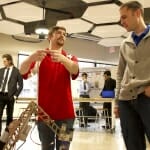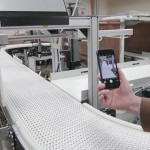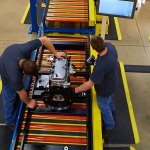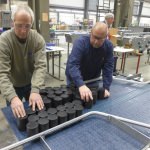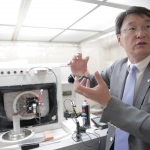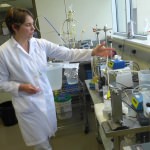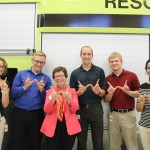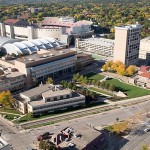Tag Manufacturing
Engineers’ projects in focus as campus makerspace holds first “reverse career fair”
“It’s a great way for students who have been making a wide range of projects and prototypes to show them off," says the event coordinator.
Unique UW–Madison group is a route to good jobs, economic progress in power electronics
The Wisconsin Electric Machine and Power Electronics Consortium, a UW–Madison research group, is known and respected for power engineering and electrical machines and generators. It provides a big assist to that industry in Wisconsin.
UW-Madison program conveys progress to Oconto manufacturer
Conveyor maker Nercon's leaders learned new productivity techniques from UW–Madison's Engineering Professional Development department.
Advanced nano-cutter boosts emerging materials research at UW–Madison
The unique machine, the first of its kind in North America, is capable of milling in three dimensions with nanometer precision.
Biological supplier prospers with aid of UW manufacturing expertise
A Madison lab is using the university's quick response manufacturing techniques to bring products to market more quickly and improve profits.
Informatics of ‘making’ aims to unite computing, materials and manufacturing advances
Materials science, computing and manufacturing have all evolved into formidable forces on their own in recent years. Support for materials innovation is surging; computing and information are taking on an ever more powerful role in research; and American manufacturing faces a transformation at the hands of the “maker” movement and of major government and industry initiatives.
Innovation institute to broaden U.S. palette of advanced materials
Sporting sleek cases, sensitive touch screens, and an ever-increasing array of features, today's smartphones and tablets provide consumers unparalleled mobile computing capability.
Advanced manufacturing focus of June 10-14 conference
Featuring a broad swath of leading-edge research from around the world, an advanced manufacturing research conference June 10-14, 2013, will draw nearly 500 academic, industrial and governmental participants to the Monona Terrace Community and Convention Center in Madison.
With new high-tech materials, UW–Madison researchers aim to catalyze U.S. manufacturing future
Drawing on methods similar to those used to sequence the human genome, a multi-university team of researchers aims to discover and create revolutionary advanced materials that could help solve grand challenges in such areas as energy, national security and human health.

